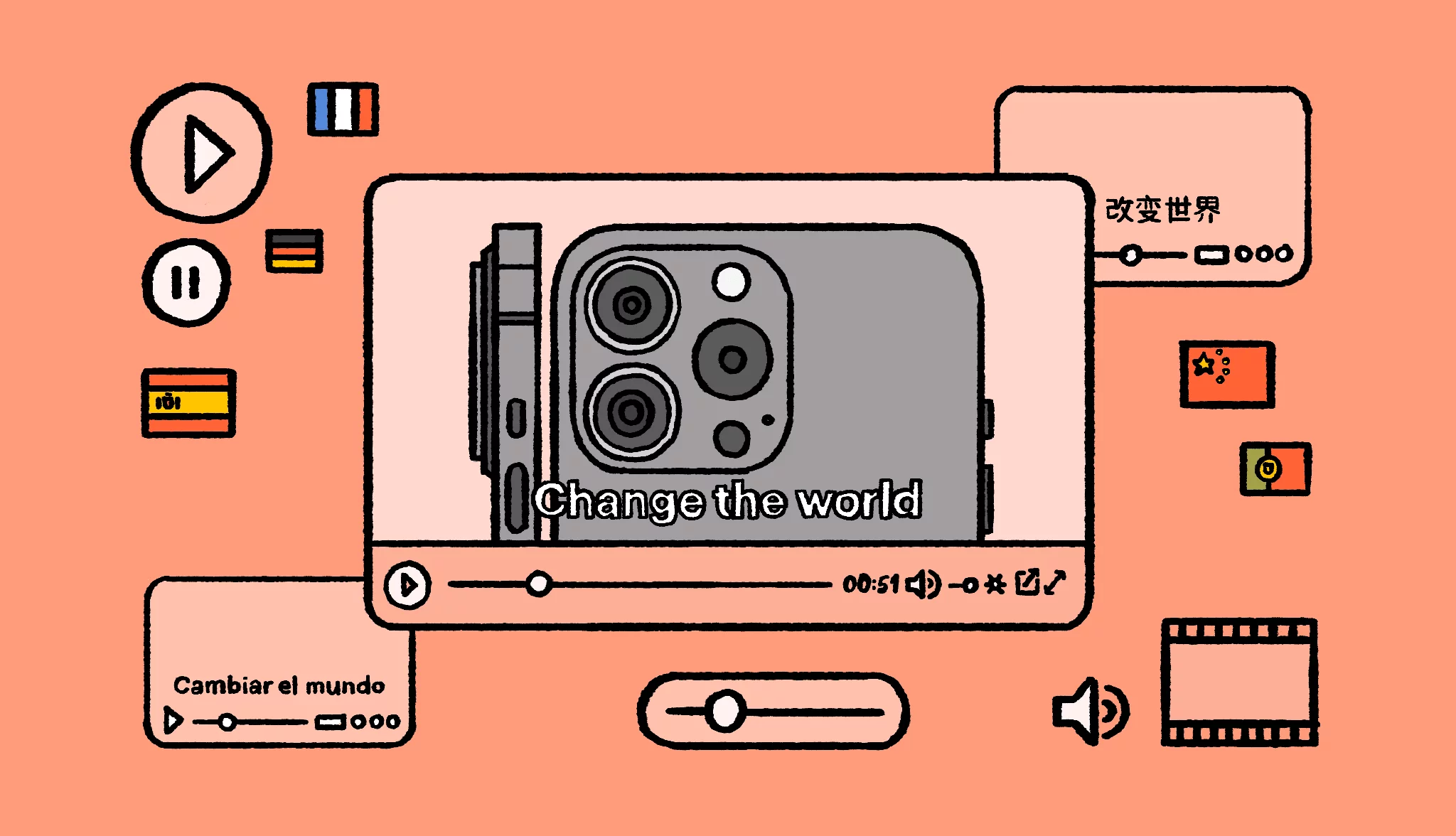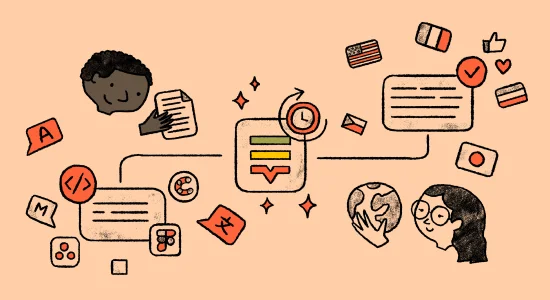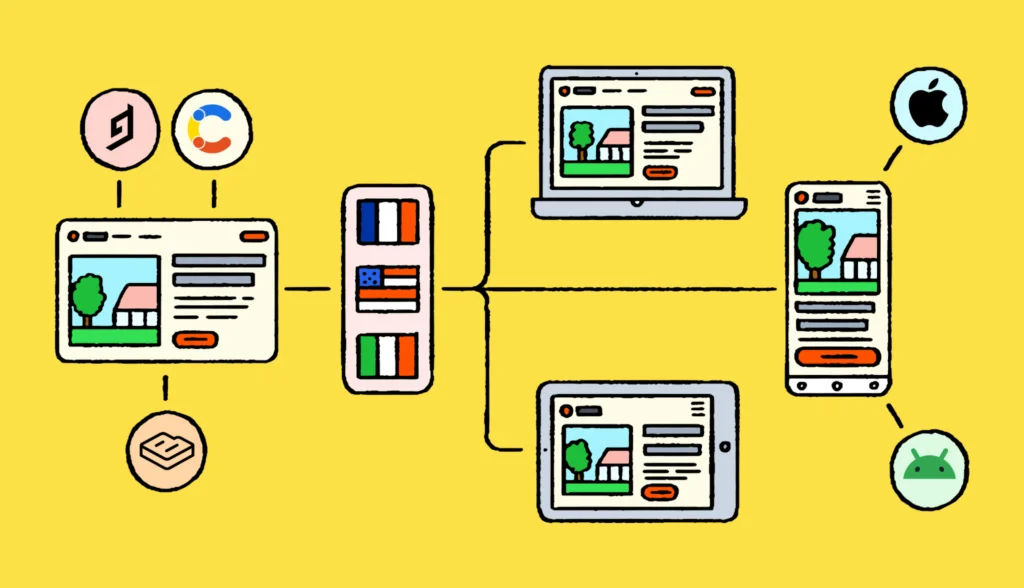The world of audiovisual content is changing rapidly. One of the changes we’re seeing is the increasing use of subtitles. Subtitles are now seen as a standard on many platforms, and they’re a hit with viewers. According to research, videos that were subtitled increased a video’s view-through rate by 80%.
Translating subtitles into other languages is just one form of video localization, as well as dubbing and voiceover. It’s a way to make your video culturally and linguistically relevant to new audiences and break down barriers.
When you add source language captions to your video, you make it more accessible for anyone who is deaf or hard of hearing, or just anyone who doesn’t want to turn the audio on. However, it is important to note that specific rules for closed captions exist for people with hearing difficulties. Subtitles also make the video easier to understand for non-native speakers. But, when you add target language subtitles to your video, you open your content up to different audiences, different markets, and increased ROI. It’s a simple, fast, and cost-effective solution.
So, let’s take a deep dive into subtitling, and how Lokalise can be part of your localization strategy.
What types of content need subtitles?
Translating or localizing videos isn’t just for media giants like Netflix or Disney anymore. Video localization is being implemented by marketing and content teams, and also growth teams who want to move into new markets or reach different audiences. Your SEO can be impacted positively, and adding subtitles is also a cost-effective way to repurpose old content.
Here are just a few of the types of videos that you may have available for subtitling. The possibilities are (almost) endless!
- Marketing videos
- Tutorials
- Training course videos
- Webinars
- Product demos
- Support videos
- Explainer videos
- Guest interviews
- Speeches
What to consider when translating subtitles
As a translator, there are a few different considerations to keep in mind when translating subtitles, which differ from other types of text.
Adaptation of the text
People read words slower than they can hear them, so adapting the text is important to ensure viewers can read everything in time. This means we have to adapt the text, keeping it brief while maintaining clarity and the intended meaning. Translating from English into Spanish can expand the text length by 20-25%, while when translating into Swedish this can be up to 35%. So, it’s important to be concise, while maintaining the meaning of the original text.
There are many ways to do this, but some common ways are:
- Editing out superfluous words (like fillers or repetition)
- Changing grammatical structures
- Merging two sentences into one
- Using antonyms to create shorter sentences
Here are a few examples:
Change of grammatical form
“She was taught long division by her teacher” (43 characters) vs. “her teacher taught her long division” (35 characters)
Antonymic translation
“I don’t think you’re right” (26 characters) changes to “I think you’re wrong” (20 characters)
Length and spacing
The standard is to stick to a maximum of two lines on the screen at a time, one if possible. This allows viewers to see the visual content but also not be overwhelmed by reading.
The number of characters per line depends on the language used. However, many advise keeping to around 35 characters per line in most languages, or 16 characters per line in East Asian languages such as Chinese, Japanese, and Korean.
Timing
It’s also essential to ensure timing is synced correctly. Your subtitle should appear when the speaker starts talking and stop appearing soon after the speaker stops.
A rough estimate of timing is to give 2 seconds per line of text, but this can be changed or reduced slightly after testing.
Quality assurance
We advise you to test your subtitles along with your video before publishing. It’s also a good idea to get a native speaker who is a subtitling expert to review them. They can check if it’s possible to read the line in the given time, as well as double-check the meaning.
How subtitle translation is supported by Lokalise
There are many available subtitle translation editors, but some features on the Lokalise platform could support you more, for both smaller and large projects, and whatever your use case.
SRT file support
Gone are the days of burning subtitles directly onto a video. The best way to add subtitles to a video is in a plain text file, which is separate from the video.
Subtitle file formats like SRT file contain information regarding the subtitles, including the start and end timecodes of the text, so your subtitles match your audio. This format is widely accepted by video hosting sites such as Twitter, Facebook, and YouTube.
Project management
When you have a large amount of subtitles to translate, you’ll need a tool that can support your workflow. With Lokalise you can assign tasks, create chained tasks, and automate rules. By speeding up repetitive tasks and streamlining your localization efforts, you’ll get to market much faster.
Glossary and translation memory
Create and share a glossary (also known as a termbase) to ensure industry-specific terms are maintained throughout your project. You can also use the glossary across multiple projects and between multiple collaborators.
Using translation memory will vastly help your translators too, so they don’t need to repeatedly translate the same things, and can maintain consistency throughout the project.
Built-in translation providers
Just need to translate a few videos but don’t want to hire or outsource to a whole team? Choose from one of our translation providers, who also offer bilingual editing or proofreading options.
Quality assurance
Our quality assurance features make sure you don’t miss those pesky grammar and spelling mistakes, and you can automate everything for an even faster turnaround.
Machine translation
Using our machine translation features, you can speed up your translation process and lower your cost. Don’t forget to get a native speaker to check the translation afterwards.
Want to read more?
With subtitling there is a lot to remember, and all while trying to make language sound fluid and natural. We admit it – translating subtitles is truly an art form. Hopefully with these tips, you’ll find subtitles are a quick win in any localization strategy. Here are a few more articles that might help in your localization journey:




